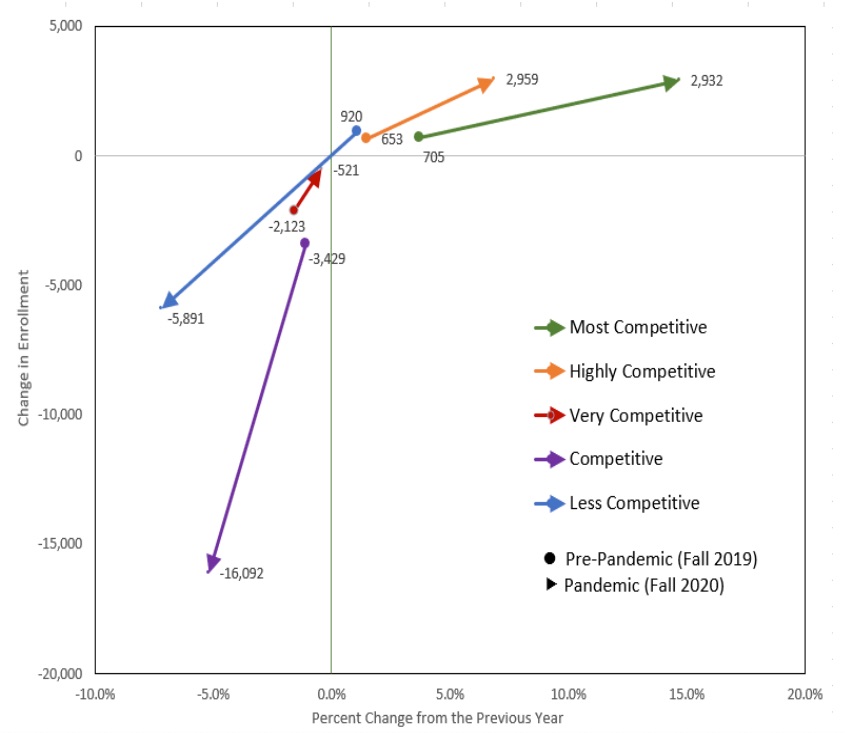National Student Clearinghouse Launches New Pilot to Map Student Transcripts to Employer-Verified Skill Sets
- NEWS HOME
- »
- Press Releases
- »
- Page 10
National Student Clearinghouse Launches New Pilot to Map Student Transcripts to Employer-Verified Skill Sets
Education nonprofit engages data services firm AstrumU to help connect education and skills to career outcomes
HERNDON, VA – (NOVEMBER 15, 2021) – The National Student Clearinghouse and AstrumU today announced a new innovation pilot designed to help schools and learners better understand how postsecondary education transcripts and records connect to outcomes in the workforce.
Over the next year, the National Student Clearinghouse — which works with more than 3,600 colleges and universities — will evaluate AstrumU’s technology and how it can support data exchange initiatives for higher ed. The two companies have established a pilot to look for opportunities to relieve data exchange constraints and provide improved access to trusted data and insights for institutions and learners. The Clearinghouse and AstrumU expect to leverage insights from the pilot to further serve the education community to identify where machine learning can be leveraged to streamline the exchange of learner information.
“As we serve education professionals and students in an emerging era of digital credentialing, it’s critical that we discover and implement new ways to interpret and transform information to benefit institutions, learners, and industry,” said Rob Groot, managing director of learner mobility and experience at the National Student Clearinghouse. “This pilot initiative builds on our long history as a trusted, nonprofit partner in the education industry for nearly 30 years. Our aim is to develop new services with AstrumU that will unlock more value for the learners, the institutions, employers and public sector stakeholders who rely on information and Clearinghouse data for business decisions.”
AstrumU’s platform can ingest verified data directly from both schools, and employers, to understand—and predict—how specific skills, courses, and even internships or service-learning experiences translate into career outcomes. Its AI-powered recommendation engine uses predictive models to identify and recommend high-value career paths within reach for each student based on their academic and professional experiences.
“Emerging technologies such as machine learning and artificial intelligence are now making it possible to analyze and understand the connections between transcripts and credentials and their value in the labor market,” said Kaj Pederson, chief technology officer, AstrumU. “This initiative is about democratizing insight into education-to-career pathways for institutions, students, and prospective employers.”
Originally incubated at the University of Kansas, AstrumU’s suite of tools for learners, and advisors are now used by an initial cohort of colleges and universities across the country that includes the University of Kansas, the University of Washington, Pepperdine University, American University, and others.
About the National Student Clearinghouse®
The National Student Clearinghouse, a nonprofit formed in 1993, is the trusted source for and leading provider of higher education verifications and electronic education record exchanges. Besides working with nearly 3,600 postsecondary institutions, the Clearinghouse also provides thousands of high schools and districts with continuing collegiate enrollment, progression, and completion statistics on their alumni. For more details, visit studentclearinghouse.org.
About AstrumU
AstrumU translates educational experiences into economic opportunity. We are on a mission to quantify the return on education investment for learners, education providers, and employers. We help institutions measure the value created for incoming and returning students, while assisting them in securing industry partnerships that lead students seamlessly into high-demand career pathways. Institutions partner with AstrumU to drive enrollment and increase alumni and corporate engagement, while extending economic mobility opportunities inclusively to all learners.
Contact: media@studentclearinghouse.org and media@astrumu.com.
###
